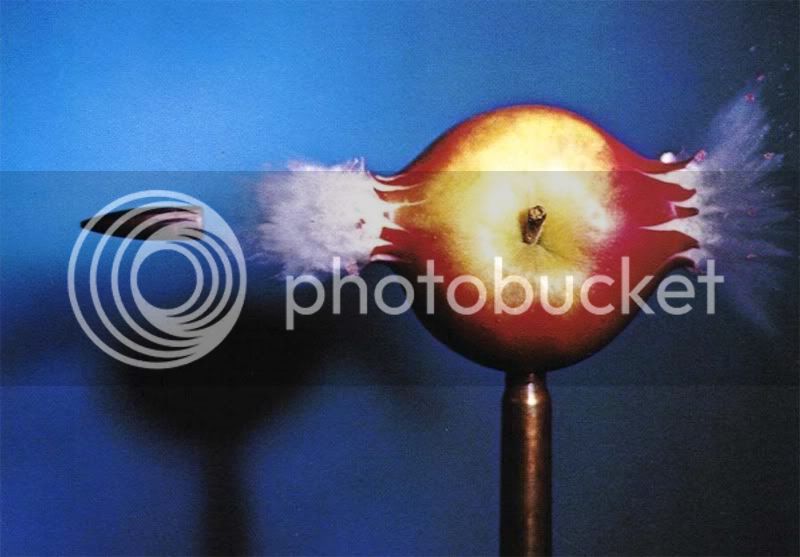Larry Pletcher
50 Cal.
- Joined
- Jul 27, 2006
- Messages
- 1,313
- Reaction score
- 67
I figured to start this rather than hijack the other topic.
Obduration in MLs has been an interest to me for quite a while. This was much discussed on another mailing list long ago. The problem to me is that, in most cases it is difficult to prove. I'm going to start at what can be proved and move to what is more difficult.
I shoot a paper-patched long range bullet gun. The bullet slides down the barrel easily with just the weight of the ramrod. If this bullet is fired with a mild load, say 40 gr, the patch is burned. Loaded with a normal load, say 80-90 gr, there is no burning. Instead the paper is creased heavily or sliced in thin strips. This seems to be evidence that when the bullet leaves the muzzle, it is shorter and thicker than when it was loaded.
If we could recover a bullet with ZERO damage from impact we could measure it. However trying to prove what was caused by firing and what was caused by impact would be impossible.
Another way would be to look at rifling marks. The length of rifling marks would tell us how completely the bullet "bumps up". Again recovering an undamaged bullet is the problem. I'm told that oiled sawdust does pretty well, but any damage is probably not good enough.
Here is where photography comes in. I have wanted to photograph a paper patch bullet separating from the patch. I want to be close enough to see the length of the rifling marks. If this could be done, the length of the rifling marks show direct evidence of obduration and how far forward the obduration goes.
This can be done with the right equipment. Here is a photo demonstrating the ability:

(Photo credit- Harold Edgerton at MIT)The flash duration was 1/10,000,000 th of a second)
The projectile in the photo was traveling 2800 fps ”“ far faster than we need for a ML experiment. If we can stop a bullet or ball at 1000 ”“ 1500 fps and examine rifling marks, we might be successful.
If it sounds easy, it isn’t - but I’m not too far off. Here is a photo taken a few years ago with more primitive equipment.

In this pic the .40" ball is traveling about 1000 fps. It breaks an infrared beam at the moment it sheds its patch. This triggers a flash in a dark room. The shooter has to hit the beam in total darkness, and the camera had to be focused on the spot on the beam that the ball breaks. We spent more time than I'd like to tell about getting this shot.
Using this set up to prove obduration with a bullet would be an easier task than with a ball. With a bullet in my gun, there are no rifling marks when the bullet is loaded. Any rifling marks in a photo would prove the existance of obduration. The size of the powder charge would determine how far forward the rifling marks went.
If I set about to prove that obduration exists in a fired ball, I would first have to load a ball into the muzzle and pull it back out to see the amount of rifling marks left by the patch. To confirm obduration, we would need to see a longer rifling mark on the ball in the photo than on the ball just removed from the muzzle.
All this is to demonstrate that it is much easier to argue about obduration than to prove it. I'm confident that obduration occures in soft lead bullet guns. My gut says it takes place in round ball guns but certain conditions might be needed to be able to measure it. I'd want a large ball, very tight patch, almost no lube, and plenty of luck. The list of problems to be over come is long - not the least of which is stopping a 540 gr bullet at 1100fps inside the lab, er I mean my garage.
I realize this is long. You can probably see why I haven't started on this right away.
Regards,
Pletch
Obduration in MLs has been an interest to me for quite a while. This was much discussed on another mailing list long ago. The problem to me is that, in most cases it is difficult to prove. I'm going to start at what can be proved and move to what is more difficult.
I shoot a paper-patched long range bullet gun. The bullet slides down the barrel easily with just the weight of the ramrod. If this bullet is fired with a mild load, say 40 gr, the patch is burned. Loaded with a normal load, say 80-90 gr, there is no burning. Instead the paper is creased heavily or sliced in thin strips. This seems to be evidence that when the bullet leaves the muzzle, it is shorter and thicker than when it was loaded.
If we could recover a bullet with ZERO damage from impact we could measure it. However trying to prove what was caused by firing and what was caused by impact would be impossible.
Another way would be to look at rifling marks. The length of rifling marks would tell us how completely the bullet "bumps up". Again recovering an undamaged bullet is the problem. I'm told that oiled sawdust does pretty well, but any damage is probably not good enough.
Here is where photography comes in. I have wanted to photograph a paper patch bullet separating from the patch. I want to be close enough to see the length of the rifling marks. If this could be done, the length of the rifling marks show direct evidence of obduration and how far forward the obduration goes.
This can be done with the right equipment. Here is a photo demonstrating the ability:

(Photo credit- Harold Edgerton at MIT)The flash duration was 1/10,000,000 th of a second)
The projectile in the photo was traveling 2800 fps ”“ far faster than we need for a ML experiment. If we can stop a bullet or ball at 1000 ”“ 1500 fps and examine rifling marks, we might be successful.
If it sounds easy, it isn’t - but I’m not too far off. Here is a photo taken a few years ago with more primitive equipment.

In this pic the .40" ball is traveling about 1000 fps. It breaks an infrared beam at the moment it sheds its patch. This triggers a flash in a dark room. The shooter has to hit the beam in total darkness, and the camera had to be focused on the spot on the beam that the ball breaks. We spent more time than I'd like to tell about getting this shot.
Using this set up to prove obduration with a bullet would be an easier task than with a ball. With a bullet in my gun, there are no rifling marks when the bullet is loaded. Any rifling marks in a photo would prove the existance of obduration. The size of the powder charge would determine how far forward the rifling marks went.
If I set about to prove that obduration exists in a fired ball, I would first have to load a ball into the muzzle and pull it back out to see the amount of rifling marks left by the patch. To confirm obduration, we would need to see a longer rifling mark on the ball in the photo than on the ball just removed from the muzzle.
All this is to demonstrate that it is much easier to argue about obduration than to prove it. I'm confident that obduration occures in soft lead bullet guns. My gut says it takes place in round ball guns but certain conditions might be needed to be able to measure it. I'd want a large ball, very tight patch, almost no lube, and plenty of luck. The list of problems to be over come is long - not the least of which is stopping a 540 gr bullet at 1100fps inside the lab, er I mean my garage.
I realize this is long. You can probably see why I haven't started on this right away.
Regards,
Pletch






